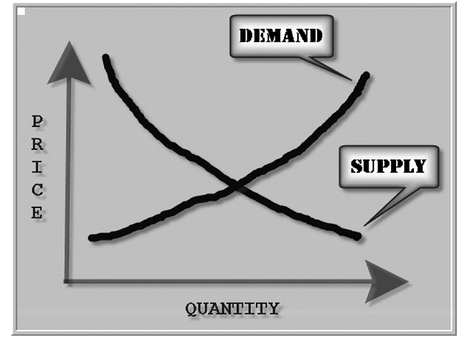DEMANDING CONSEQUENCES
Now let’s return to the car dealership example. If the dealer is selling cars faster than he can get them, then demand for the cars is high and this pushes up the prices. When demand is high, prices rise (as shown in Figure 3.1).
When demand is high for a currency, the value of the currency rises. In this case, the investors from Sydney, Tokyo, Moscow, Dubai, Zurich, Berlin, Paris, London, New York, Rio de Janeiro, Chicago, San Francisco and every major city in between all have to buy NZD to get the 8.25 percent interest rates. When they are all doing this, the demand for NZD is high, and this drives up the value of the NZD. See Figure 3.2.
This is exactly what happened in 2006 and the first half of 2007. Interest rates were high, investment flowed to the island nation, and the value of the New Zealand dollar skyrocketed.
FIGURE 3.1 Supply and Demand
Source: FX Bootcamp, LLC (www.fxbootcamp.com)

Get The FX Bootcamp Guide to Strategic and Tactical Forex Trading now with the O’Reilly learning platform.
O’Reilly members experience books, live events, courses curated by job role, and more from O’Reilly and nearly 200 top publishers.

